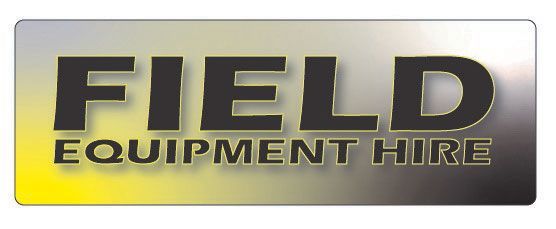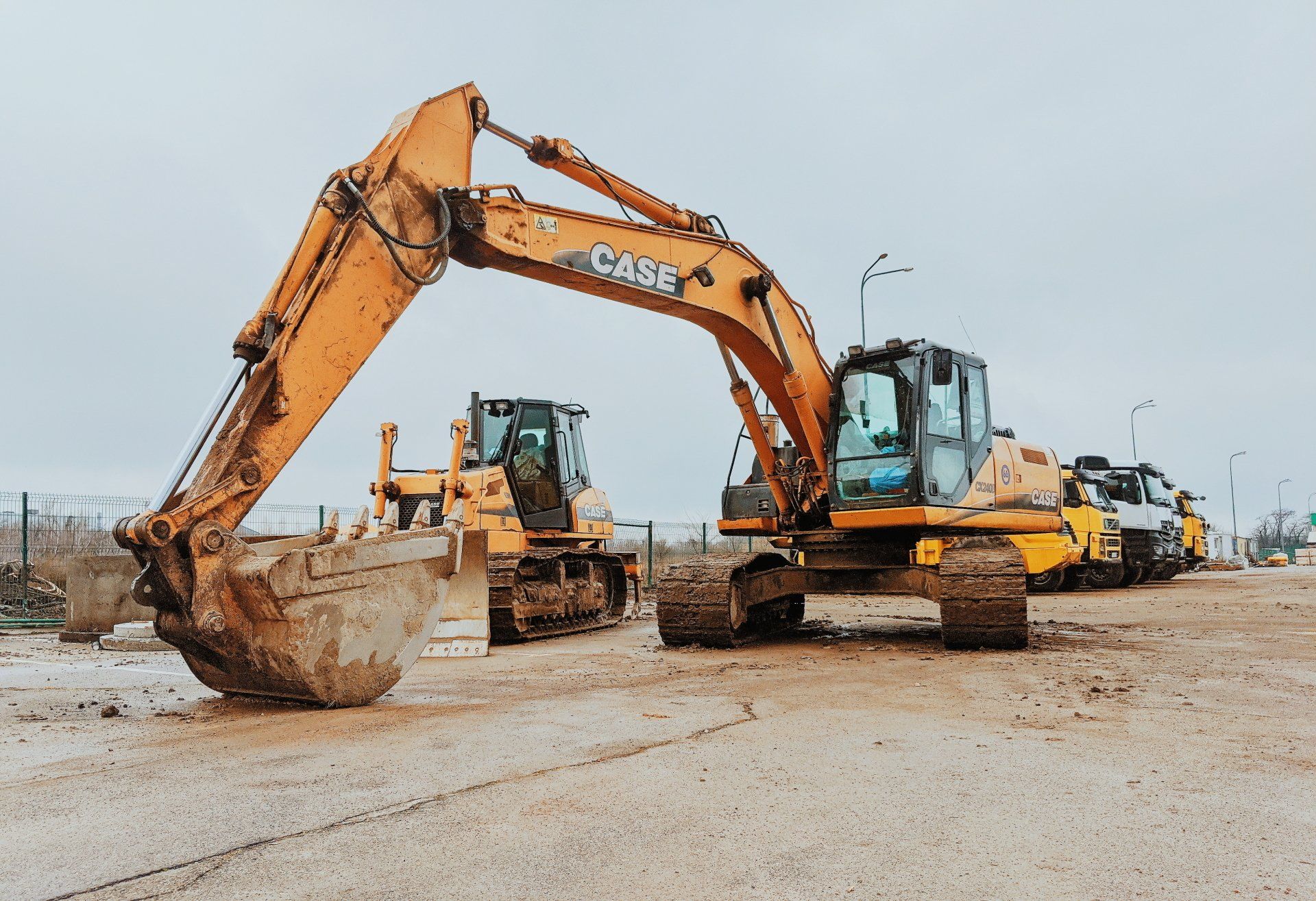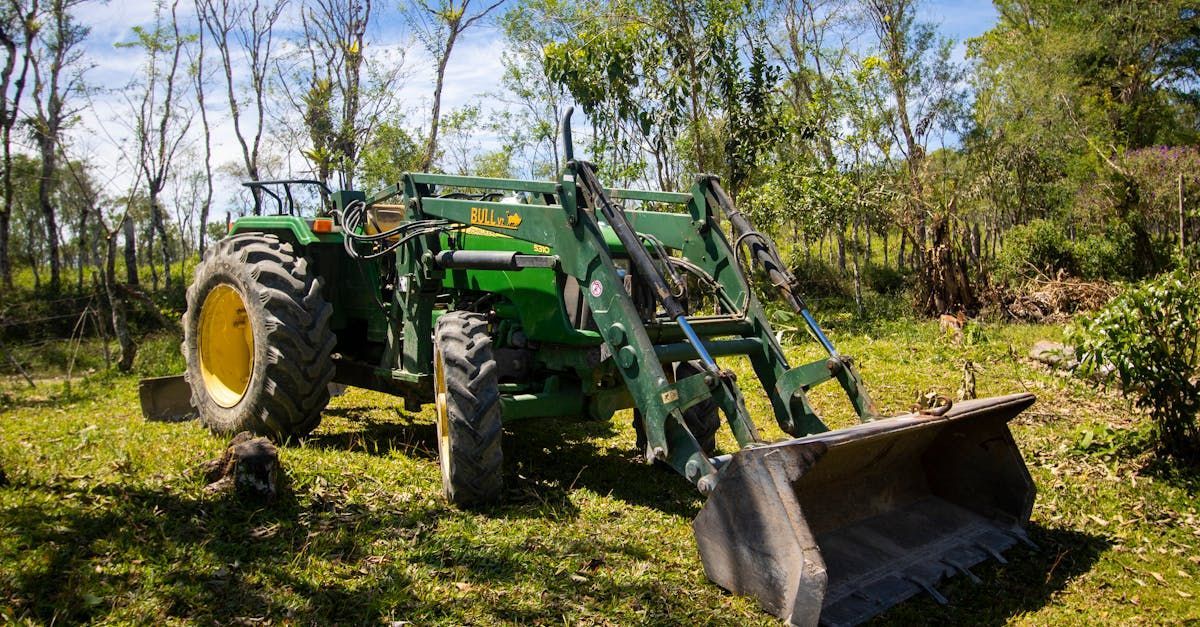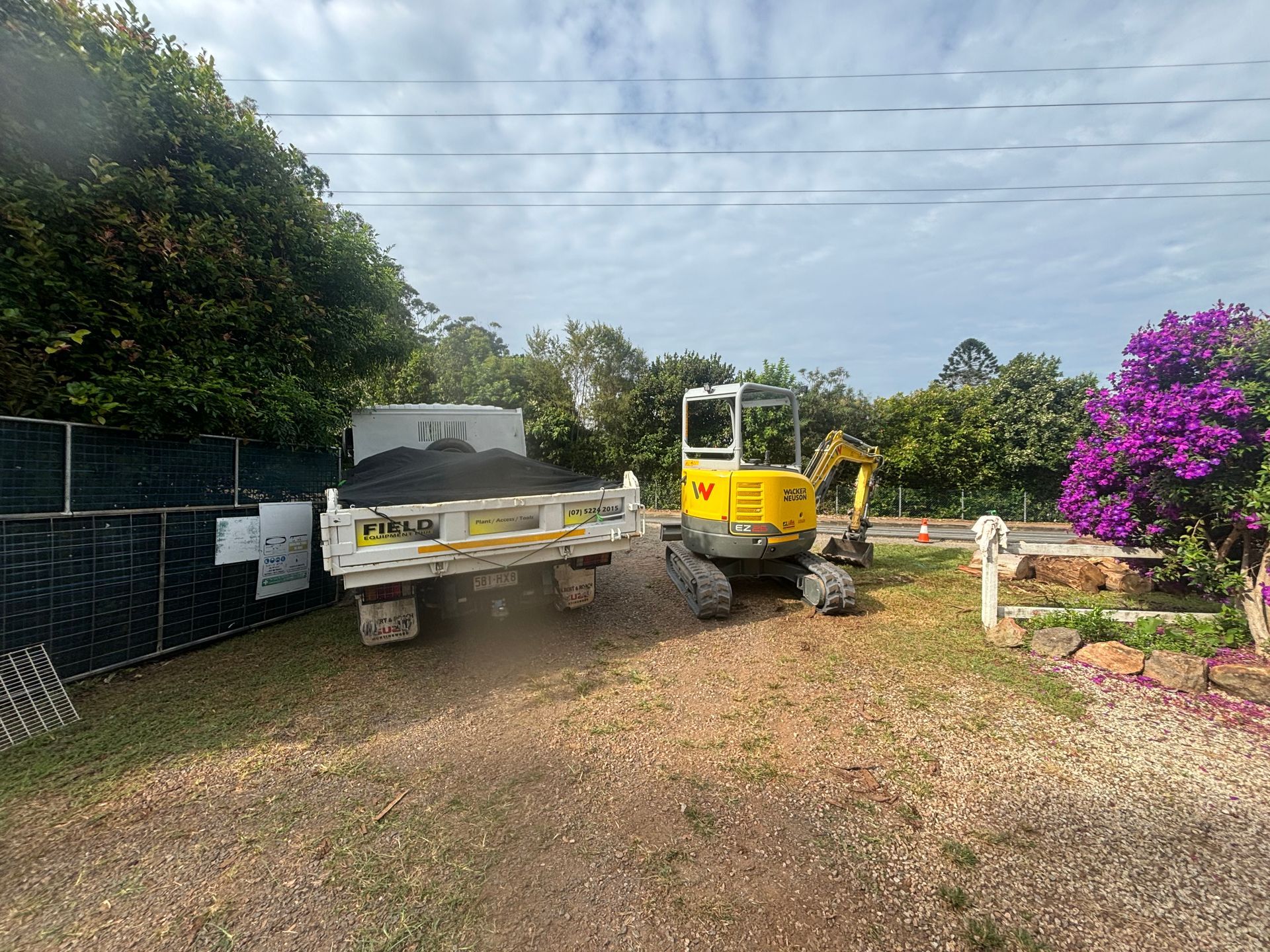The Field Equipment Hire blog
Access posts that provide valuable insights on equipment hire solutions, latest company news, and detailed information on earthmoving machinery. From detailed guides to answering commonly asked questions, our posts are designed to support local projects and further your understanding of high-quality machinery hire solutions.

By Field Equipment Hire
•
June 10, 2024
Boost Your Project Efficiency with Sunshine Coast's Premier Equipment Hire Services Welcome to Field Equipment Hire, your trusted partner for all your equipment rental needs on the Sunshine Coast. As a family-owned business, we take pride in serving contractors and DIY enthusiasts with top-quality machinery and personalized customer service. Whether you need excavators, tractors, or posi tracks, we've got you covered. Discover how our comprehensive equipment hire solutions can help you achieve your project goals efficiently and cost-effectively. About Field Equipment Hire At Field Equipment Hire, we understand the challenges of both large-scale construction projects and small DIY tasks. Our mission is to provide reliable, high-quality equipment to ensure your projects run smoothly. With years of experience in the industry, we have built a reputation for delivering exceptional service and maintaining an extensive inventory of well-maintained equipment. Why Choose Us? 1. Family-Owned and Operated: As a family business, we treat our customers like family. Our commitment to your satisfaction drives us to go above and beyond to meet your needs. 2. Extensive Inventory: From Sunshine Coast excavator hire to tractor hire and posi track hire, we offer a wide range of equipment to tackle any job. Our equipment is regularly serviced and inspected to ensure optimal performance and safety. 3. Competitive Pricing: We offer competitive rates on all our equipment hire services, ensuring you get the best value for your money without compromising on quality. 4. Flexible Rental Options: Whether you need equipment for a day, a week, or longer, we offer flexible rental terms to suit your project timeline and budget. 5. Expert Advice: Not sure what equipment you need? Our knowledgeable team is here to help you select the right machinery for your specific requirements. Our Equipment Hire Services 1. Sunshine Coast Excavator Hire - Our range of excavators is perfect for any excavation job, big or small. From digging foundations to landscaping projects, our excavators deliver power and precision to get the job done efficiently. 2. Tractor Hire - Whether you need to till the land, mow large areas, or handle heavy-duty agricultural tasks, our tractors are up to the challenge. We offer various sizes and attachments to match your project needs. 3. Posi Track Hire - For projects requiring superior maneuverability and traction, our posi tracks are the ideal solution. They are perfect for navigating rough terrain and tight spaces, making them a versatile choice for many applications. 4. General Equipment Hire - In addition to our specialized machinery, we also provide a wide range of general equipment for construction, landscaping, and DIY projects. From power tools to generators, we have everything you need to complete your project efficiently. How to Get Started Getting started with Field Equipment Hire is easy. Simply visit our website at [www.fieldequipmenthire.com.au](https://www.fieldequipmenthire.com.au) to browse our equipment catalog and make a booking online. Our user-friendly booking system allows you to select the equipment you need, choose your rental period, and arrange for pickup or delivery. Contact Us Have questions or need assistance? Our friendly team is here to help. Contact us today at [insert contact number] or email us at [insert email address]. We look forward to helping you achieve your project goals with our reliable and affordable equipment hire services.
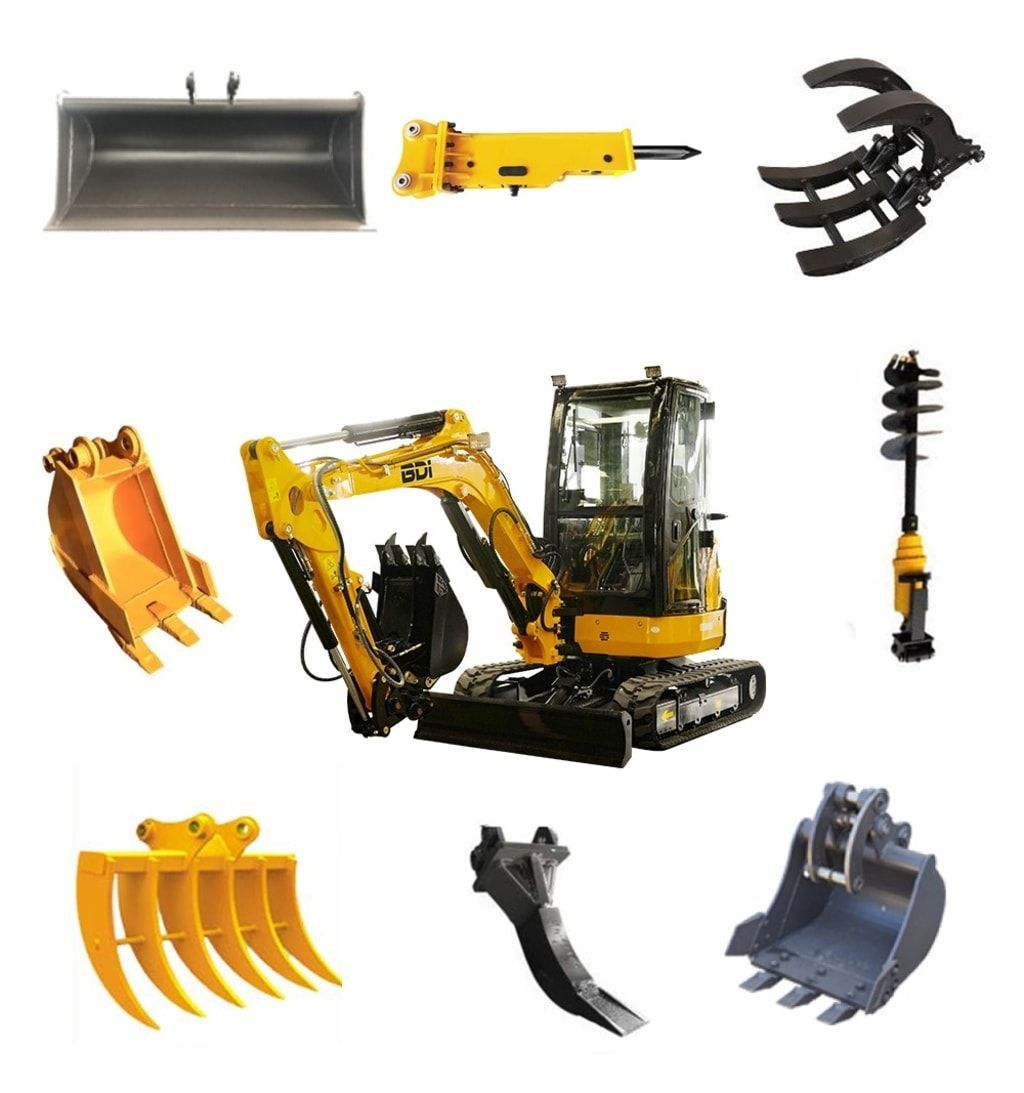
By Field Equipment Hire
•
June 4, 2024
1. Introduction to Mini Excavator Attachments Mini excavators are compact, maneuverable machines designed for digging and earthmoving. Their small size makes them ideal for jobs in tight spaces where larger equipment cannot operate. The versatility of mini excavators is greatly enhanced by the wide range of attachments available, allowing them to perform tasks beyond simple digging. 2. Types of Mini Excavator Attachments Buckets Uses: General Purpose Buckets: Ideal for digging and loading. They come in various sizes to match the capacity of your mini excavator. Trenching Buckets: Narrower than general-purpose buckets, trenching buckets are perfect for digging trenches for utilities and irrigation systems. Grading Buckets: Designed for precision grading and leveling, these buckets are wider and have a flat edge. Augers Uses: Augers are essential for drilling holes for posts, poles, trees, and shrubs. They come in various diameters to match the specific needs of your project. Augers are particularly useful in landscaping, fencing, and construction projects. Breakers Uses: Hydraulic breakers, or hammers, are used for breaking up concrete, asphalt, and rock. They are essential for demolition projects and site preparation, making quick work of tough materials. Grapples Uses: Grapples are used for handling large, bulky materials such as logs, rocks, and debris. They are commonly used in demolition, forestry, and recycling applications. Grapples come in different configurations, including multi-tine and clamshell designs. Rippers Uses: Rippers are designed to break up hard soil, rock, and ice. They are used to prepare ground for digging or to remove stubborn roots and stumps. Rippers are essential for site preparation and agricultural tasks. Thumbs Uses: Thumbs are auxiliary attachments that work in conjunction with buckets. They provide additional gripping power, making it easier to handle irregularly shaped objects such as rocks, logs, and debris. Trenchers Uses: Trenchers are used for digging narrow trenches for utilities, irrigation lines, and drainage systems. They are more efficient than traditional buckets for this purpose, as they create clean, consistent trenches. 3. Choosing the Right Attachment Choosing the right attachment for your mini excavator depends on several factors: Project Requirements: Consider the specific tasks you need to perform. For example, if you are digging trenches, a trenching bucket or trencher would be more suitable than a general-purpose bucket. Machine Compatibility: Ensure the attachment is compatible with your mini excavators' make and model. Check the attachment's weight and hydraulic requirements. Material Type: The type of material you are working with will influence your choice. Harder materials may require more robust attachments like breakers or rippers. 4. Maintenance Tips for Mini Excavator Attachments Proper maintenance is crucial to extend the life of your mini excavator attachments and ensure optimal performance: Regular Inspections: Check for signs of wear and tear, such as cracks, loose bolts, and hydraulic leaks. Lubrication: Keep moving parts well-lubricated to prevent friction and wear. Cleaning: Clean attachments after each use to remove dirt, debris, and corrosive materials. Storage: Store attachments in a dry, protected area to prevent rust and damage. 5. Conclusion Mini excavator attachments greatly enhance the versatility and functionality of your equipment, allowing you to tackle a wide range of tasks with ease. By choosing the right attachment for your project and maintaining it properly, you can maximize the efficiency and lifespan of your mini excavator. Whether you are digging, drilling, breaking, or handling materials, there is an attachment designed to meet your needs. For more information on mini excavator attachments and to explore our range of available equipment, visit Field Equipment Hire .

By Field Equipment Hire
•
April 22, 2024
Choosing the right mini excavator for your project is crucial to maximizing efficiency, minimizing costs, and ensuring the quality of your work. Mini excavators are versatile machines capable of a wide range of tasks, from digging trenches to demolishing small structures. However, selecting the best size depends on several factors, including the project's scale, the workspace's size, and specific job requirements. This guide will help you understand the different sizes of mini excavators available and their best uses to optimize your work on any site. Understanding Mini Excavator Sizes Mini excavators are typically categorized by their operating weight, which includes the weight of the machine itself plus a standard bucket and typically ranges from 1 ton to 10 tons. The weight class often correlates directly with the excavator's power and capabilities such as maximum digging depth, reach, and lifting capacity. 1. Micro Excavators (1 Ton or Less) Best for: Tight spaces, indoor work, light landscaping, and small projects. Uses: Digging small trenches for plumbing or electrical lines. Removing stumps and digging garden beds in residential properties. Working inside buildings or in backyards with limited access. Micro excavators are perfect for jobs in confined areas where larger machines cannot access. Their compact size allows them to pass through doorways and operate in tight spaces without damaging the surroundings. 2. Mini Excavators (1 Ton to 3.5 Tons) Best for: Residential landscaping, small construction projects, and utility works. Uses: Digging trenches, holes, and foundations. Demolishing small structures. Repairing sewer lines. General landscaping and pool installations. These excavators are ideal for small to medium-sized projects where a balance between power and size is essential. They offer excellent maneuverability and sufficient power to handle a variety of tasks without being too bulky. 3. Mid-sized Mini Excavators (4 Tons to 6 Tons) Best for: Medium construction sites, demolition projects, and substantial landscaping work. Uses: Excavating residential basements or large swimming pools. Large-scale landscape grading and complex sewer repairs. Demolishing buildings and other concrete structures. Mid-sized mini excavators are more robust and provide deeper digging depths and greater power. They are suitable for projects that require more extensive excavation but still benefit from the compact size of a mini excavator. 4. Largest Mini Excavators (6 Tons to 10 Tons) Best for: Large construction sites, heavy-duty digging, and demolition needs. Uses: Digging and backfilling large trenches for industrial construction. Demolition of larger structures. More significant landscaping and site preparation for commercial properties. These excavators combine the benefits of mini excavators with the capabilities of a standard excavator, making them suitable for heavy-duty tasks that still require a compact machine. Factors to Consider When Choosing a Mini Excavator 1. Project Requirements Evaluate the scale of the project. Consider the depth and breadth of excavation needed and whether the machine will be used for multiple tasks, such as digging and demolition. 2. Site Conditions Assess the working conditions of the site. Tight urban spaces, soft soils, and indoor requirements can all influence the best mini excavator size. 3. Attachment Needs Consider what attachments you will need. Different sizes of excavators support various attachments like breakers, augers, or grading blades, which can impact the size choice. 4. Transportation and Access Think about how you will transport the excavator to the site. Larger mini excavators might require more substantial transportation means and better site access. 5. Operator Comfort and Safety Ensure the excavator provides adequate comfort and safety features for operators, especially for projects that require many operational hours. Conclusion Choosing the right size mini excavator is not just about the scale of the project but also about how precisely the excavator fits within the project’s specific needs like space constraints and the type of job at hand. At Field Equipment Hire, we offer a wide range of mini excavators from micro to large mini excavators that can suit just about any need. Whether you're digging a pool, laying pipes, or preparing a landscape, we have the right equipment for you. Visit Field Equipment Hire to browse our selection or contact us for personalized advice on choosing the right mini excavator for your project's needs. Optimize your efficiency and ensure the highest quality in your construction or landscaping project with the perfect mini excavator size!
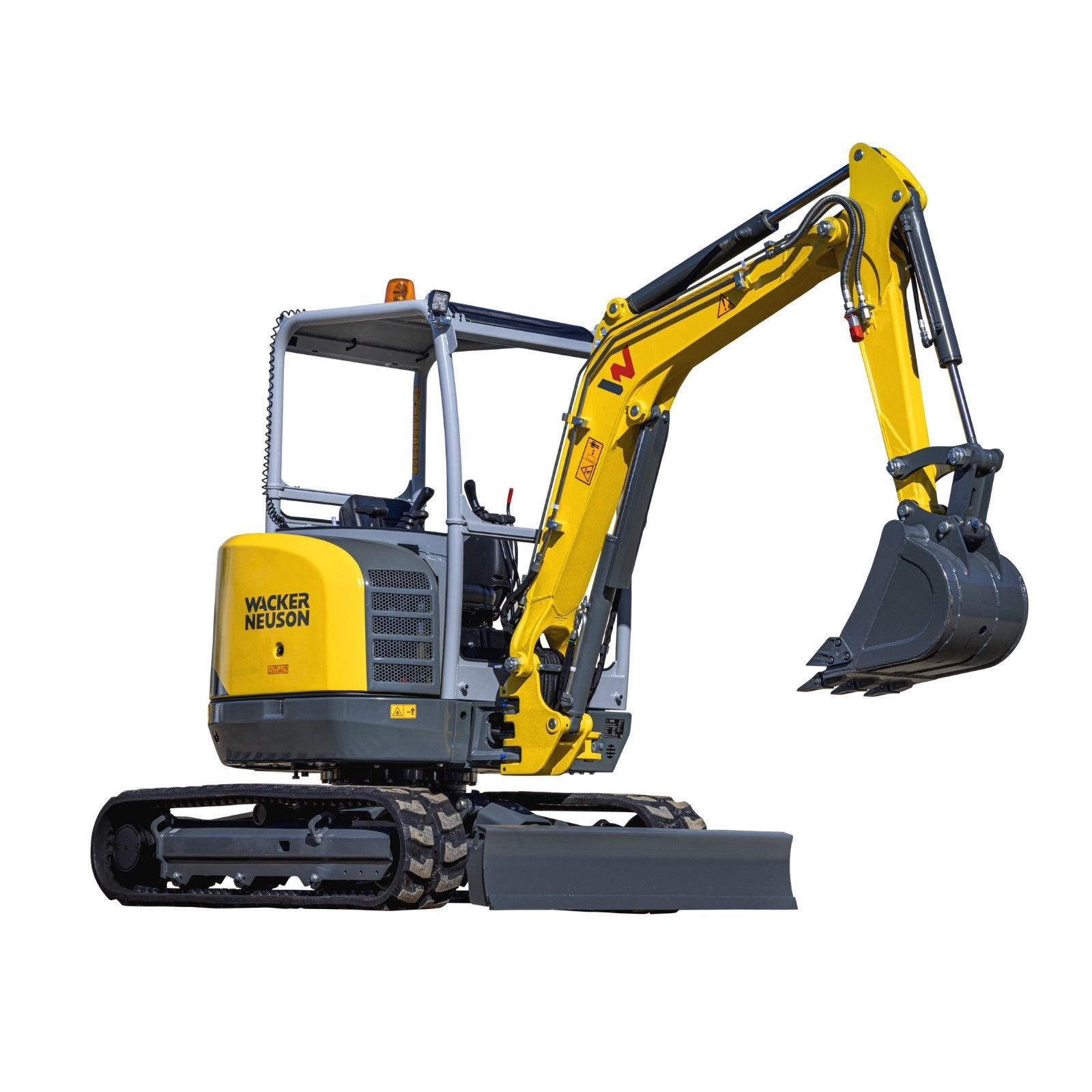
By Field Equipment Hire
•
February 27, 2024
In the dynamic landscape of construction and landscaping projects, having the right equipment can make all the difference in productivity, efficiency, and ultimately, project success. When it comes to compact yet powerful excavation solutions, Wacker Neuson mini excavators stand out as industry leaders. But why should you choose to hire one for your next project instead of purchasing? Let's explore the benefits of opting for a Wacker Neuson mini excavator from Field Equipment Hire, serving the Sunshine Coast, including Nambour. Unmatched Performance in Compact Design: Wacker Neuson mini excavators are renowned for their exceptional performance packed into a compact design. These versatile machines excel in navigating tight spaces and maneuvering around obstacles with ease, making them ideal for urban construction sites and residential projects where space is limited. Whether you're digging trenches, grading landscapes, or performing utility work, a Wacker Neuson mini excavator from Field Equipment Hire offers the power and precision you need to get the job done efficiently. Enhanced Maneuverability and Accessibility: The Sunshine Coast, including Nambour, is known for its diverse terrain and challenging landscapes. When working on projects in such environments, having equipment that can navigate rough terrain and access hard-to-reach areas is essential. Wacker Neuson mini excavators feature innovative design elements that enhance maneuverability and accessibility, allowing operators to tackle projects with confidence, even in confined or uneven spaces. With Field Equipment Hire's fleet of well-maintained mini excavators, you can conquer any terrain with ease and efficiency. Versatility for Various Applications: From residential landscaping to commercial construction, Wacker Neuson mini excavators offer unmatched versatility to tackle a wide range of applications. With interchangeable attachments such as buckets, augers, and hydraulic breakers, these machines can adapt to diverse project requirements with minimal downtime. Whether you're digging, lifting, or demolishing, a Wacker Neuson mini excavator hired from Field Equipment Hire provides the versatility you need to maximize productivity and complete projects on schedule. Cost-Effective Rental Solutions: Investing in heavy machinery like a mini excavator can entail significant upfront costs, not to mention ongoing maintenance expenses and depreciation. Opting to hire a Wacker Neuson mini excavator from Field Equipment Hire offers a cost-effective alternative that aligns with your budget and project needs. With flexible rental terms and competitive rates, you can access premium equipment without the financial burden of ownership. Plus, you'll benefit from Field Equipment Hire's comprehensive maintenance and support services, ensuring that your rental experience is seamless from start to finish. Expert Support and Local Convenience: Field Equipment Hire takes pride in providing personalized service and expert support to customers throughout the Sunshine Coast, including Nambour. Our team of knowledgeable professionals is dedicated to helping you find the right equipment solutions for your specific requirements. Whether you need assistance selecting the perfect mini excavator for your project or require on-site training and technical support, we're here to ensure your rental experience exceeds expectations. With convenient locations and prompt delivery services, Field Equipment Hire makes it easy to access top-quality equipment whenever and wherever you need it. Conclusion: In summary, hiring a Wacker Neuson mini excavator from Field Equipment Hire offers numerous advantages for construction and landscaping professionals on the Sunshine Coast, including Nambour. From unmatched performance and versatility to cost-effective rental solutions and expert support, our fleet of mini excavators is poised to enhance efficiency and productivity on your next project. Contact Field Equipment Hire today to learn more about our Wacker Neuson mini excavator rental options and discover how we can support your project success.

By Hunter Field
•
February 27, 2024
In today's fast-paced world, businesses constantly face the challenge of optimizing their operations while managing costs effectively. One area where this balance can be achieved is in equipment acquisition. While purchasing equipment may seem like the go-to option, there's a compelling case for considering equipment hire as a superior alternative. In this blog post, we'll delve into the top five reasons why hiring equipment makes better business sense than outright purchasing. Cost Efficiency: One of the most significant advantages of hiring equipment is the immediate cost savings it offers. Purchasing equipment involves a substantial upfront investment, which can strain your budget, especially for smaller businesses or projects with fluctuating needs. On the other hand, hiring equipment allows you to access top-quality machinery without the hefty initial expense. Moreover, you only pay for the duration of use, eliminating the need for long-term financial commitments. Flexibility and Adaptability: Business needs can evolve rapidly, and so can equipment requirements. Opting for equipment hire provides unparalleled flexibility and adaptability to meet changing demands. Whether you need additional machinery to handle a sudden surge in workload or specialized equipment for a one-time project, hiring allows you to scale up or down as needed without being burdened by unused assets during downtimes. Access to Cutting-Edge Technology: Staying competitive in today's market requires access to the latest and most advanced equipment. However, the rapid pace of technological innovation means that purchased equipment can quickly become outdated or obsolete. By hiring equipment, you gain access to state-of-the-art machinery without the risk of depreciation. This ensures that you're always equipped with the best tools for the job, enhancing productivity and maintaining a competitive edge. Reduced Maintenance and Storage Costs: Owning equipment entails additional expenses beyond the initial purchase price, such as maintenance, repairs, and storage. These costs can significantly impact your bottom line over time. When you hire equipment, maintenance and servicing are typically handled by the rental company, saving you both time and money. Additionally, you're spared the expense of storing bulky machinery when it's not in use, freeing up valuable space in your facilities. Risk Mitigation: Investing in equipment comes with inherent risks, including depreciation, technological obsolescence, and unforeseen maintenance issues. By opting for equipment hire, you transfer these risks to the rental company, allowing you to focus on your core business activities without worrying about asset management. This risk mitigation strategy provides peace of mind and ensures that you can allocate resources more efficiently towards revenue-generating endeavors. Conclusion: In conclusion, the decision to hire equipment over purchasing is a strategic move that offers numerous benefits for businesses of all sizes. From cost efficiency and flexibility to access to cutting-edge technology and risk mitigation, equipment hire presents a compelling alternative that aligns with the dynamic nature of modern business environments. By leveraging the advantages of equipment hire, businesses can optimize their operations, minimize costs, and maintain a competitive edge in today's competitive marketplace. If you're looking for reliable equipment hire solutions that deliver exceptional value and performance, look no further than Field Equipment Hire. With a comprehensive range of high-quality machinery and personalized service, we're committed to helping businesses thrive. Contact us today to learn more about our offerings and how we can support your project needs.
